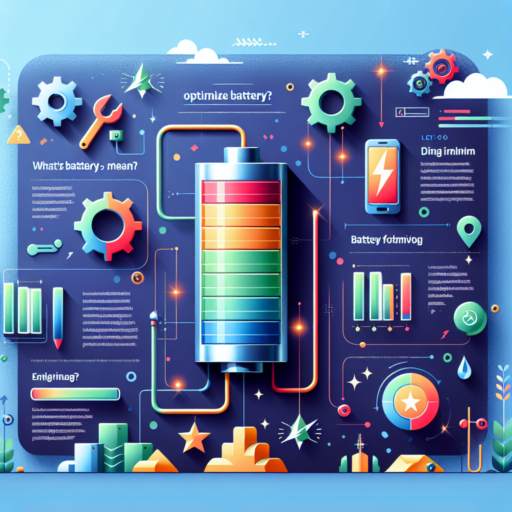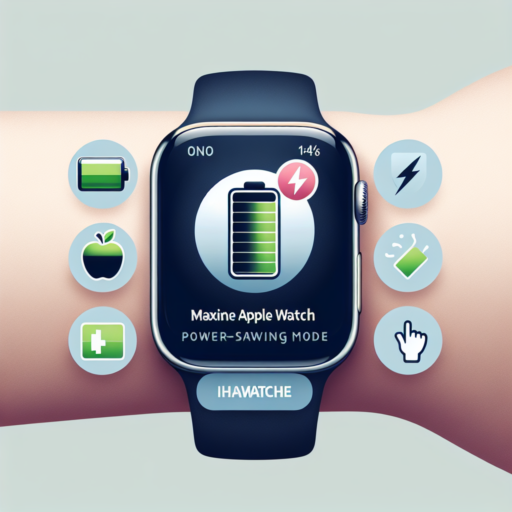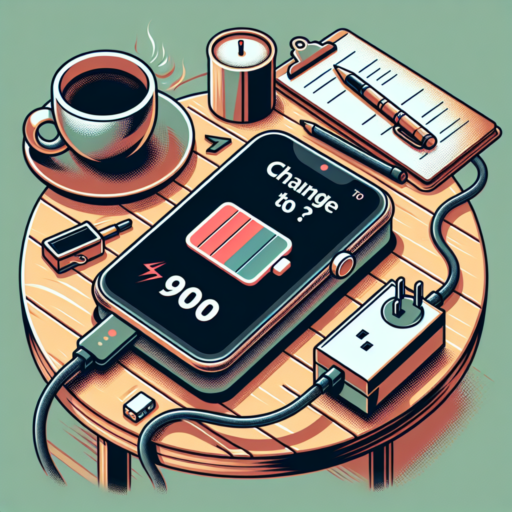Understanding Battery Optimization: What It Really Means
Battery optimization is a crucial concept for anyone relying on electronic devices in their daily lives. This term broadly refers to the various techniques and strategies used to extend the lifespan and enhance the performance of a device’s battery. By understanding and applying these principles, users can significantly improve their gadget’s efficiency and reliability. Battery optimization goes beyond simple practices, dipping into the realm of smart software solutions and hardware adjustments aimed at minimizing energy consumption without sacrificing functionality.
At the core of battery optimization strategies is the idea of reducing unnecessary power usage. This includes dimming screen brightness, turning off background applications, and adjusting the device’s settings to a more energy-efficient mode. However, understanding the intricacies of how different modes and settings impact battery life is crucial. For instance, features like Bluetooth, GPS, and Wi-Fi are notorious for draining battery life if left on without necessity. Thus, managing them effectively plays an integral role in optimizing battery usage.
Moreover, the role of software in battery optimization cannot be underestimated. Advances in operating systems and apps have introduced smarter battery management features, such as adaptive battery technology, which learns from your usage patterns to limit battery for apps you seldom use. These intelligent systems are continuously working in the background, ensuring that energy consumption is kept to a minimum while still providing users with a seamless and uninterrupted experience. Recognizing and utilizing these features can make a significant difference in prolonging the life of your battery and by extension, your device.
How Does Battery Optimization Work?
Battery optimization is a critical feature in modern devices that helps in managing power consumption effectively. It works by analyzing how applications and hardware components use the battery, then making adjustments to improve efficiency and extend the device’s battery life. This process involves a combination of software algorithms and hardware innovations designed to reduce energy wastage.
One of the core mechanisms of battery optimization is app management. This involves identifying apps that are using excessive battery in the background and limiting their access to system resources. Techniques such as putting apps to sleep when they’re not in use and restricting background data usage are common strategies employed. Additionally, features like adaptive battery use AI to learn user patterns and prioritize battery usage for frequently used apps, ensuring that less critical applications don’t deplete battery resources unnecessarily.
Another aspect of battery optimization focuses on adjusting device settings based on usage. This includes dimming the screen brightness, altering screen timeout settings, and automatically turning off Bluetooth and GPS when not in use. By tailoring these settings, devices can significantly reduce unnecessary power drain, contributing to longer battery life.
Benefits of Optimizing Your Device’s Battery
Optimizing your device’s battery can yield considerable advantages that extend beyond merely prolonging its daily charge. By engaging in simple yet effective optimization practices, users can experience a remarkable improvement not only in the lifespan of the battery but also in the overall performance of their device. The following sections highlight some of the key benefits associated with battery optimization.
Enhanced Battery Lifespan
One of the most significant benefits of optimizing your device’s battery is the extended lifespan it offers. Batteries subjected to optimal charging practices and maintained at moderate levels of power tend to degrade at a slower pace. This means you won’t have to replace your device as frequently due to battery issues, saving you money in the long run and contributing to environmental sustainability by minimizing electronic waste.
Improved Device Performance
Device performance is intricately linked to battery health. When a battery is optimized, it ensures that the device can operate at its peak efficiency. This optimization helps in preventing overheating, reducing lag, and ensuring that apps and functions run smoothly. Consequently, users can enjoy a more responsive and satisfying experience with their devices, which is vital for both productivity and entertainment.
Energy Efficiency and Cost Savings
Optimizing your device’s battery not only conserves energy but also leads to significant cost savings over time. Devices running on optimized batteries consume less power, reducing the need for frequent charges. This lower power consumption means less electricity is used, which can noticeably decrease your energy bills. Additionally, with devices running efficiently, there is less wear and tear on components, further reducing the costs associated with repairs and replacements.
Step-by-Step Guide to Optimize Your Battery Life
Understanding Your Device’s Battery Use
Optimizing your battery life starts with a keen understanding of how your device uses power. Within most smartphones, tablets, and laptops, you can find a built-in battery usage feature that details which apps and services are consuming the most power. Regularly check this feature to identify potential energy drains and adjust your usage patterns or app settings accordingly. Paying attention to your device’s power consumption can make a significant difference in extending your battery life.
Adjust Your Screen Settings
The screen is often the biggest power consumer on your device. Ensure to adjust the brightness to the lowest comfortable level to save energy. Consider enabling adaptive brightness if your device supports it, as it automatically adjusts the screen brightness based on the ambient light, optimizing battery usage. Moreover, reducing the screen timeout duration can prevent your screen from staying on unnecessarily long when not in use.
Update Your Device Regularly
Operating system and app updates often include optimizations that can improve battery life. Outdated software can lead to higher power consumption due to inefficiencies or bugs. Therefore, keeping your device and applications up-to-date is crucial. Enable automatic updates where possible, so you’re always running the latest, most efficient versions of your software and apps.
Common Misconceptions About Battery Optimization
When it comes to maximizing the lifespan and efficiency of our mobile devices or laptops, battery optimization often tops the list of concerns. However, numerous myths and misconceptions cloud the truth about effective battery management. Understanding these can make a significant difference in how you use and preserve your device’s energy source.
One prevalent myth is that you should always let your battery drain to 0% before charging it. This belief stems from the «memory effect» in older battery technologies, like Nickel-Cadmium (NiCad). Modern devices mostly use Lithium-ion (Li-ion) or Lithium-polymer (LiPo) batteries, which do not suffer from this issue. In fact, deep discharges can harm these batteries, shortening their overall lifespan.
Another misunderstanding is that keeping your device plugged in all the time damages the battery. While it’s true that Li-ion batteries can degrade over time, modern devices come equipped with sophisticated charging circuits designed to prevent overcharging. However, keeping a device fully charged at 100% for extended periods can contribute to battery stress. It’s advisable to keep the battery level between 20% and 80% to promote longevity.
Lastly, there’s the myth that closing apps you’re not actively using can save a significant amount of battery life. This isn’t necessarily the case. Most modern operating systems are incredibly efficient at managing background processes. Constantly closing and reopening apps can actually use more power than leaving them alone, due to the resources required to restart the apps.
Battery Optimization Tips for Android and iOS Devices
Keeping your mobile device running smoothly throughout the day requires smart battery management, especially if you rely on your Android or iOS device for work, entertainment, and staying connected. Understanding how to optimize battery usage can significantly extend your device’s operational hours. Here, we focus on actionable tips that cater to both platforms, ensuring your phone holds a charge from dawn till dusk.
Adjust Screen Brightness and Timeout Settings
One of the simplest yet most effective ways to conserve battery life on both Android and iOS devices is to adjust your screen’s brightness. Manually lowering the brightness, or enabling adaptive/auto-brightness, which dynamically adjusts the screen brightness based on ambient light, can drastically reduce power consumption. Moreover, setting a shorter screen timeout interval ensures that your device isn’t wasting energy on an idle display. Ensuring these settings are optimized can make a notable difference in battery longevity.
Manage Apps and Background Processes
Apps running in the background can be a significant drain on your battery. On both Android and iOS systems, it’s crucial to regularly review and restrict app permissions for background activity. Consider disabling background app refresh for apps that don’t require immediate updates. This can be done through the Settings menu under Apps & Notifications on Android or General > Background App Refresh on iOS. Additionally, uninstalling or disabling unused apps can prevent them from consuming battery power silently.
Use Battery Saver and Low Power Mode
Both Android and iOS offer features designed to extend your device’s battery life when it gets low. Android’s Battery Saver mode and iOS’s Low Power Mode can be activated manually or will kick in at a pre-specified battery level. These modes reduce background activity, decrease visual effects, and limit features like mail fetch, automatic downloads, and certain animations. Activating these features when you’re running low on juice or expect to be away from a charger for an extended period can be a lifesaver.
How to Tell If Your Battery Needs Optimization
Knowing when your battery needs optimization can be key to maintaining your device’s performance and longevity. Observing your device’s battery life and how it handles daily tasks can provide substantial clues. If your battery drains faster than usual or your device struggles to hold charge, it might be time to consider optimization.
One significant sign that your battery is in need of optimization is rapid power depletion. If your device’s battery percentage drops drastically with minimal use, it’s a clear indication that the battery isn’t functioning as efficiently as it should. This is often due to background apps consuming power even when they’re not in active use.
Another indication is if your device takes longer to charge or if it cannot reach 100% battery level. These symptoms suggest that your battery’s capacity has diminished over time, affecting its ability to store energy. Performing battery optimization techniques can help recalibrate power management settings and improve charging efficiency.
No se han encontrado productos.
Debunking Myths: The Truth About Battery Optimization Apps
In the digital age, battery optimization apps have surged in popularity, promising extended battery life and enhanced performance for smartphones. However, several myths surround these apps, leading users to have misconceptions about their actual effectiveness. This article aims to shed light on the truths and debunk common myths associated with battery optimization applications.
Myth 1: Battery Optimization Apps Drastically Increase Battery Life
One of the most pervasive myths is that battery optimization apps can drastically prolong your phone’s battery life. Reality tells a different story. While some of these apps can close unnecessary background processes and adjust settings to be more energy-efficient, the actual increase in battery life is often minimal. The effectiveness largely depends on the phone’s usage patterns and existing battery health.
Myth 2: All Battery Optimization Apps are Created Equal
Another common misunderstanding is the belief that all battery optimization apps offer the same benefits. In truth, the quality and effectiveness of these apps can vary significantly. Some apps are developed by reputable companies and can contribute to marginal improvements in battery performance, whereas others may merely display ads, with little to no real impact on battery life.
Understanding the real capabilities of battery optimization apps requires a critical look at user reviews, empirical evidence, and the technical methods they employ to manage battery life. While they can offer some benefits, it’s important to maintain realistic expectations about what these apps can achieve. Stay informed and make educated choices when selecting an app to help manage your smartphone’s battery life.
The Future of Battery Technology and Optimization
The landscape of battery technology and optimization is poised for dramatic transformations. As we propel into a future dominated by renewable energy sources and electric vehicles, the efficiency, longevity, and sustainability of batteries stand at the forefront of scientific innovation. Groundbreaking research and development efforts aim to usher in a new era of battery technology that could redefine what’s possible in energy storage and management. This emerging horizon promises not only to enhance the performance of batteries but also to decrease their environmental impact, making them more compatible with the ethos of a green future.
Advancements in materials science play a critical role in the next wave of battery technology. The quest for alternative materials that are more abundant, less expensive, and environmentally benign is relentless. Innovators are exploring beyond traditional lithium-ion batteries to discover and optimize new chemistries like lithium-sulfur (Li-S) and solid-state batteries. These new materials promise to significantly increase energy density, reduce charging times, and extend battery life, all while maintaining safety and reliability at elevated standards. Such developments could revolutionize everything from consumer electronics to grid storage and electric transportation.
Moreover, the optimization of battery architecture and manufacturing processes is set to play a pivotal role in the future of battery technology. By leveraging the power of artificial intelligence and machine learning, researchers are refining the design of batteries to enhance their efficiency and lifespan dramatically. This involves intricate simulations and predictive analytics to identify optimal materials compositions and structural configurations. The aim is to produce batteries that not only meet the energy demands of future technologies but do so in a way that is both economically viable and sustainable. Thus, the ongoing advancements in battery technology hold the key to unlocking a fully electrified, sustainable future.




